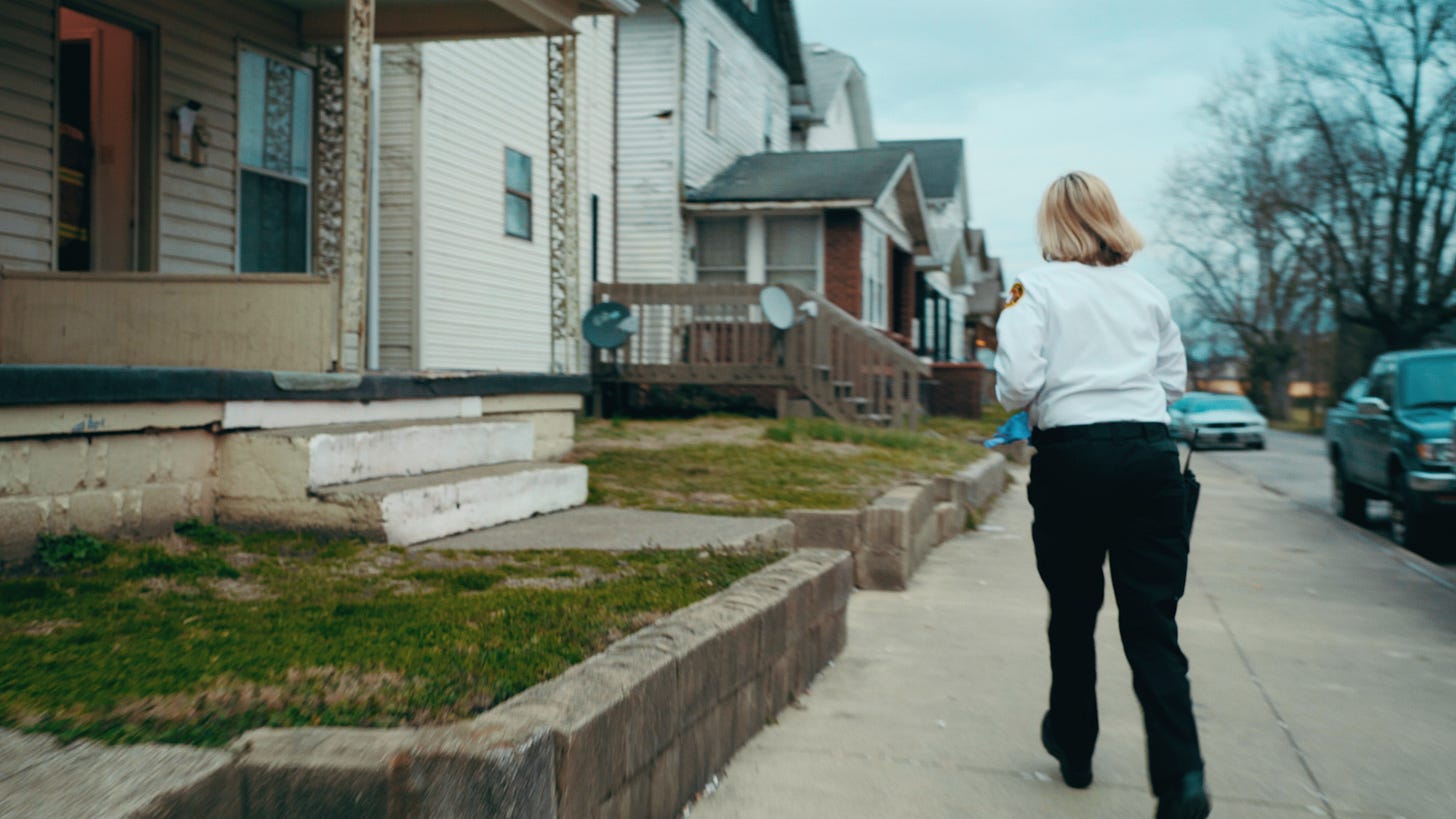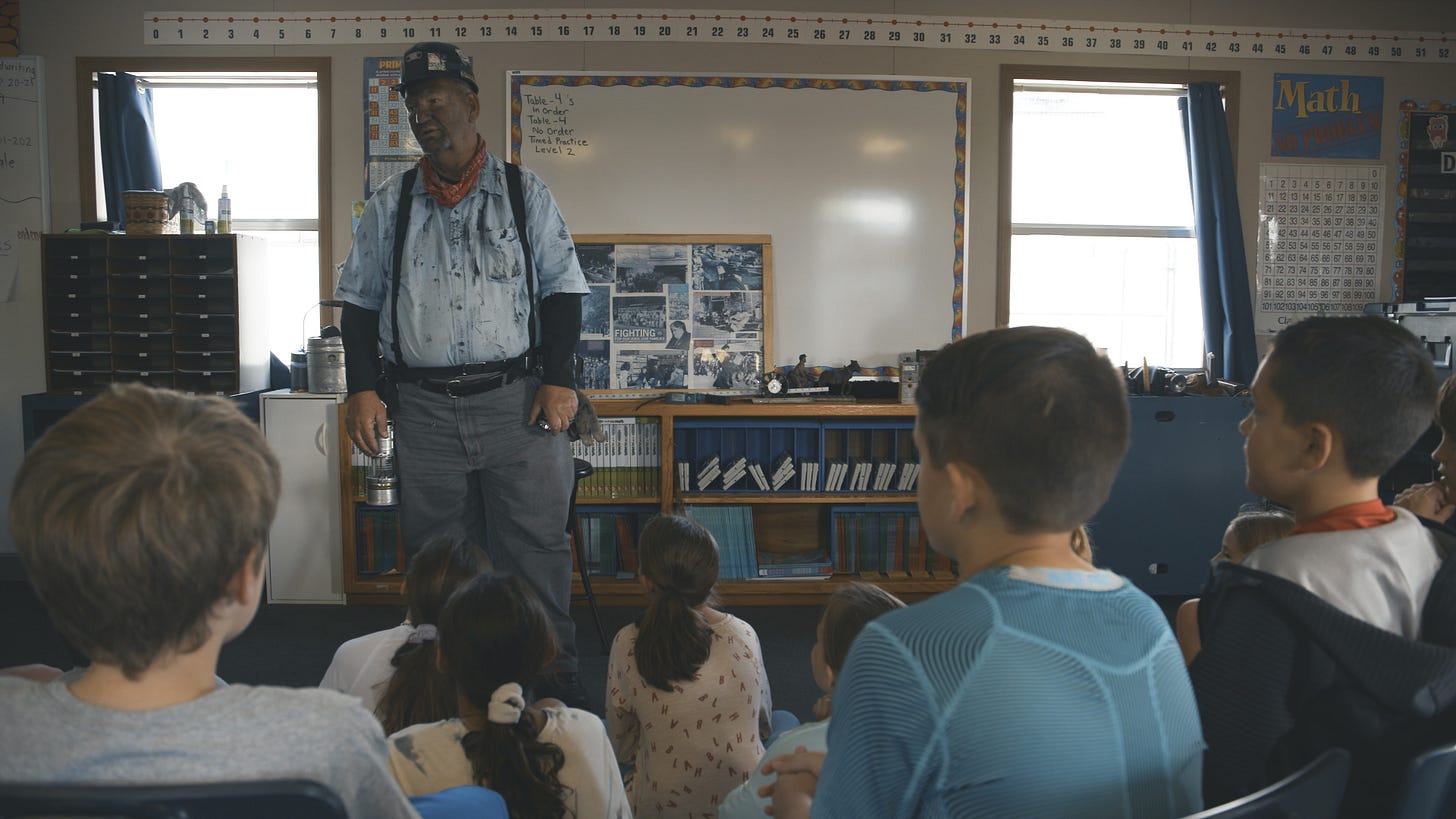The Unanswerable Questions
threads I keep unraveling and never quite tie back together
In my years of making films, I've been asked the same questions time and again:
Why don’t you make single-character films? or Why do you make “group” films?’
Should documentary participants (aka subjects) be paid?
Why don’t your films lean into antagonism?
I’m often asked these questions in public forums, on panels, or in post-screening Q&As, where I am not given ample time to discuss my deeper thinking. Because truly, each question feels like it’s pulling at a loose thread in the fabric of nonfiction filmmaking—threads I keep unraveling and never quite tie back together. My answers, will not be your answers because there is not one RIGHT answer to any of these.
I keep circling around these questions, exploring them through the stories I choose to tell and the way I work with people. So, here are my reflections, untidy as they may be.
The Single-Character Film
Many of my films focus on groups or communities rather than central characters:
Heroin(e) focuses on three women and the people they encounter.
Recovery Boys follows four men and the rehab community surrounding them.
Tutwiler highlights a group of about 10 women working with prison doulas.
King Coal focuses on an entire region, with two girls (and myself as the narrator) threading the story along.
Timberline centers on multiple residents in a small town—archetypal characters like superintendents, real estate agents, shop owners, and others.
Coal’s Deadly Dust examines a cross-section of coal miners and follows the work of reporter Howard Berkes.
I’ve made single-character films in the past, but they’ve tended to be very short character portraits—not fully fleshed-out features (over 75 minutes) or featurettes (40 minutes or under). So why do I gravitate toward group films instead of single-character ones? Why do the story ideas I’m currently exploring also approach narratives from multiple viewpoints?
It’s something I’ve reflected on a lot, especially since it’s a less “commercial” approach in a documentary market that’s often obsessed with celebrity or true crime, where villains or victims take center stage as singular focal points. I think it boils down to a distrust—not of individuals, but of the singular story.
When you center an entire film on one person, the audience is asked to buy into their heroism, goodness, or even villainy. But life isn’t that simple, and no one is entirely one thing or another. People are layered. They make decisions that are sometimes noble, sometimes selfish, and sometimes purely practical. I know this because I, too, am flawed and human.
The truth is, I trust groups more than individuals to carry the weight of a story. In a group, the pressure is shared. The narrative can shift, evolve, contradict itself, and breathe in ways that feel more honest to me. Normal people—like the ones in my films—don’t stand alone in their lives. They exist in relationships, communities, and contexts. To me, those contexts are the real story.
This skepticism of the singular story also explains why I’ve turned down celebrity films. The celebrities I’ve been approached to document control their image. They have too much to lose if the world sees the cracks in their veneer—the ways they fall short. They’re often the executive producers of their own narratives, with a hand in both the funding and the final cut. That’s not the kind of storytelling I want to do.
A single-character film asks the audience to either love or hate its subject. My films don’t seek that kind of tidy conclusion. I want my audiences to wrestle with contradictions, to see themselves in the people on-screen—not just their virtues, but their flaws, too.
Another reason I gravitate toward films with multiple characters is the natural back-and-forth of communication that emerges when people talk to each other. I’ve never been drawn to the traditional interview format where I, as the filmmaker, am the central thread, asking the questions and steering the conversation. Instead, I prefer to step back and let people interact with one another.
In these moments of dialogue—unscripted and unmediated—you get a more natural flow of information. The story doesn’t feel as though it’s being handed to you; it’s something you discover by observing how people relate, challenge, and support each other. This dynamic creates a richer, more scenic experience for the audience. The conversations feel lived-in, layered, and true to how people communicate in real life.
When a group is at the center, the film becomes less about what I want to know and more about what they reveal to each other. It’s a subtle but significant shift, and it’s where I think some of the most honest and unexpected storytelling happens. It also requires, you the documentarian, to give over a level of control to your participants - something that is difficult often for the over-controlling filmmaker.
Should We Pay Documentary Participants?

Then there’s the question of money—the thorny issue of whether or not to pay documentary participants.
I’ve struggled with this and responded to it in different ways. As a filmmaker, I’m often paid for my time and work. So why shouldn’t the people who open up their homes, their lives, and their stories to me be compensated as well?
But paying participants is not straightforward. Does payment make someone a performer? Does it shift the relationship in ways that complicate the truth? Does it introduce a power imbalance, where the filmmaker (me) becomes the employer and the participant becomes the employee?
In some cases, I’ve found a middle ground. For example, during My Love, I set aside part of the budget as a donation for Ginger and David, who let us into their home and lives during filming. It wasn’t a transaction, but it was included as a “location fee” in the budget—paid at the very end of production and kept quiet until then. It was a way to express gratitude for their generosity, their time, and their trust. I didn’t want them to know it was coming because I felt it would create a sense of pressure, as if they had to do something in return.
With other films like Heroin(e), none of the participants were paid, but the film itself—once completed—was able to generate both direct and indirect funding for the cause and the city. So, while the participants weren’t paid, the film acted as a generator of donations for the things they were fighting for.
There are other ways to compensate participants and show gratitude beyond direct payment. I’ve printed images for them as keepsakes, offered additional footage that might be useful to their families or communities, and paid for their time and travel to participate in post-screening Q&As, where they can share their perspectives and benefit from the film’s reach. These gestures are small but meaningful ways to reciprocate their generosity and involvement.
However, in some cases, you may need to “pay to play”—such as when documenting a severely underfunded non-profit work (real example: such as those fighting against elephant poachers). In situations like this, providing financial support makes sense, as the organization needs funds to continue their critical work. But the contract needs to be clear and the filmmaker needs to maintain final cut.
We also need to be honest about the fact that documentary participants are performing. They may not be fictionalizing their lives, but they are acting them out for the cameras. Often, they are doing things they wouldn’t normally do if the camera weren’t present. So even when their actions are real and unscripted, they are still, in a way, a performance.
We have to acknowledge the ways money, power, and storytelling intersect in documentary filmmaking. There’s no perfect answer here, but I think the best I can do is remain transparent about the ethical questions I’m working through in each project.
The Nature of Antagonism in Film

And then there’s the question of antagonism.
People ask me why my films aren’t confrontational—why they don’t point fingers or “take down the man.” I’ve been asked why Heroin(e) didn’t blame Big Pharma and why King Coal didn’t name a specific company or CEO. The truth is, I don’t believe antagonism gets us where we need to go. I also think there’s already ample blame available on the internet—do I really need to repeat what’s been said? My answer is no.
We live in a culture that thrives on division and outrage. Social media amplifies it, but it’s always been part of human nature. The problem with making antagonistic films is that they often feel small-minded and self-righteous. They tell us how to think instead of inviting us to question and reflect.
I want my films to create common ground, not build walls. That doesn’t mean avoiding hard truths or tough subjects—it means approaching them with humility. I believe listening, not shouting, is the way we actually move people.
As a filmmaker, I’m not interested in putting myself on a pedestal or preaching from a soapbox. I’ve changed my mind about so many things in life, and I know I’ll continue to. To me, a good film isn’t about having all the answers. It’s about leaving space for the audience to wrestle with the questions.
I think this approach comes down to my personality. I’m not afraid of confrontation—quite the opposite. I’m fairly confident and opinionated, but I don’t always feel the need to be the loudest voice in the room or to win every fight. I think this stems from growing up in a smaller, rural community where compromise and coexistence were essential to daily life. For better or worse, this is how I see the world.
Because of this, I doubt you’ll ever see me make a film that “takes down the man.” That’s not because I’m timid or afraid to challenge power, but because I don’t believe evil rests in one person alone. Instead, I see things as systemic, operating at the community level. I’m a big believer in underdogs and grassroots community efforts. In many ways, this answer circles back to why I make group-centered films rather than single-character ones.
The Bigger Story
At the heart of all these questions—about single-character films, about payment, about antagonism—is one fundamental truth: Stories are always bigger than the people in them.
Documentaries are not about delivering an objective truth. They’re about creating an experience, a lens through which we can see the world differently for a moment. It’s shaped by the filmmaker’s choices—what to include, what to leave out, what to emphasize. It’s a collaborative act between the filmmaker and the participants, and it’s always altered by that interaction.
This is why I make films about groups of people, why I wrestle with questions of ethics and power, and why I choose to focus on connection rather than antagonism. The world doesn’t need another hero. It needs stories that remind us of our shared humanity, in all its messy, complicated, imperfect beauty.
That’s the contract I make with my audience: to be honest about the creativity of nonfiction, to respect the people in my films, and to tell stories that are bigger than any one person or idea. And for now, that’s enough.
I’d love to learn from you. Share how you are wrestling with these topics in the comments.




